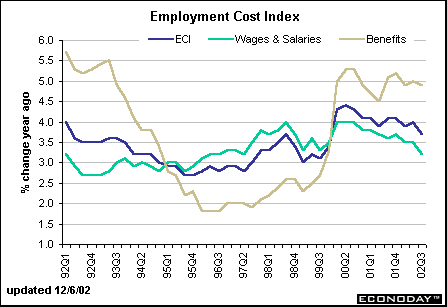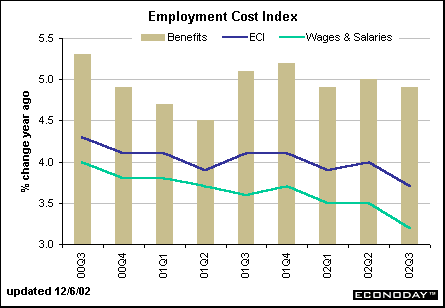
Long Term Perspective
The employment cost index is the most comprehensive measure of compensation costs faced by employers. Wages and salaries account for the bulk of the index, whereas benefits costs account for about one-third of compensation costs. Fed officials monitor this indicator because they believe that accelerating pressures on compensation will eventually lead to price increases for consumer goods and services.

Short Term Perspective
The employment cost index rose 3.7 percent in the third quarter of 2002 versus year ago levels; a bit slower than the previous quarter. Wages and salaries rose 3.2 percent in the third quarter as wage gains continued to moderate. The major problem stems from higher benefits costs which jumped 4.9 percent in the July to September period. On the whole, the employment cost index is not a worry for Fed officials these days, as it doesn't indicate runaway inflation. In fact, it allows Fed officials more leeway in keeping interest rates at low levels.



Alternative Inflation Measures • Gold Prices • Employment Cost Index • Civilian Unemployment Rate

Pool of Available Labor •
Nonfarm Productivity • Treasury Yields • Stock Prices • Fed Monetary Policy Summary
|